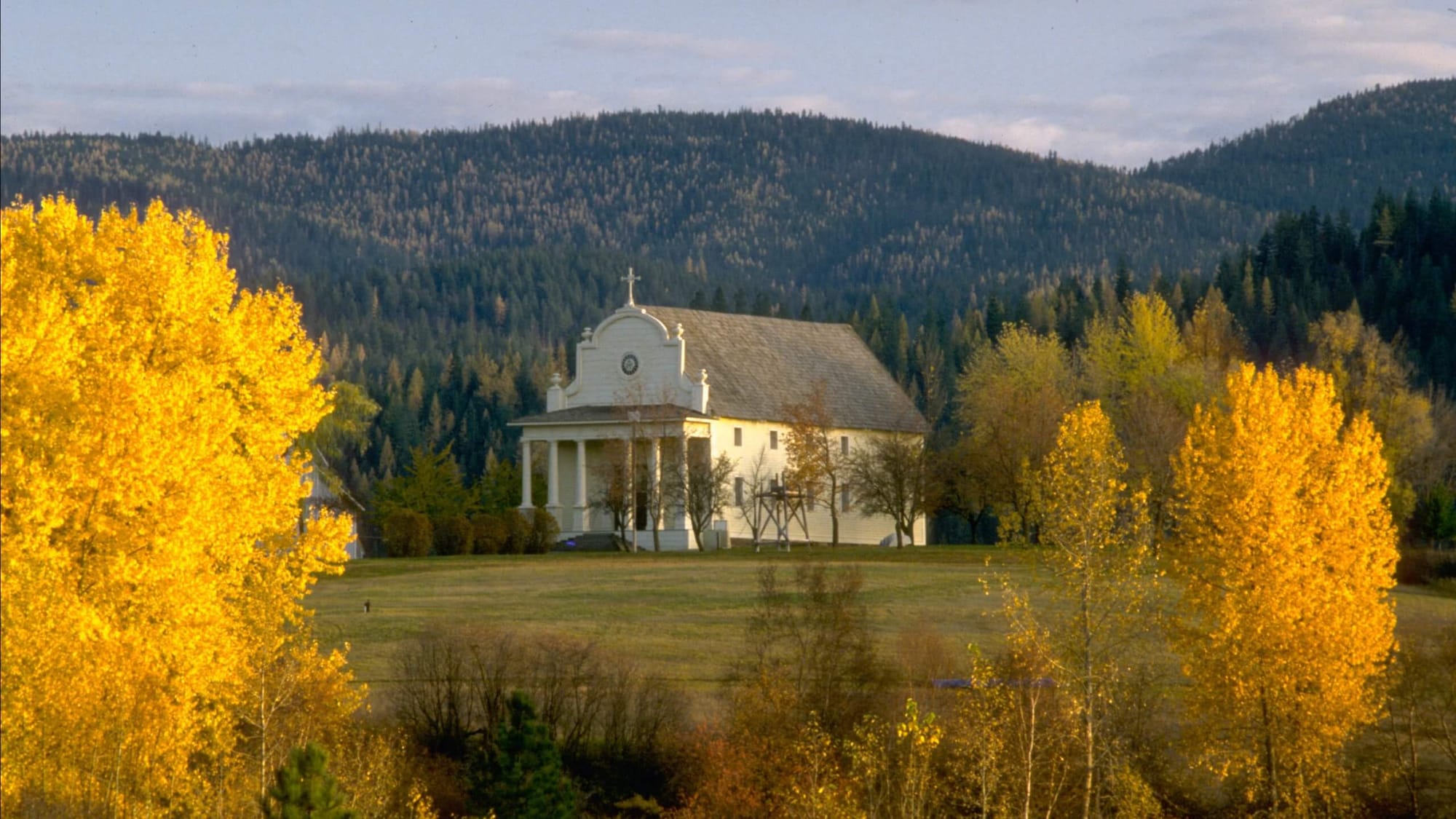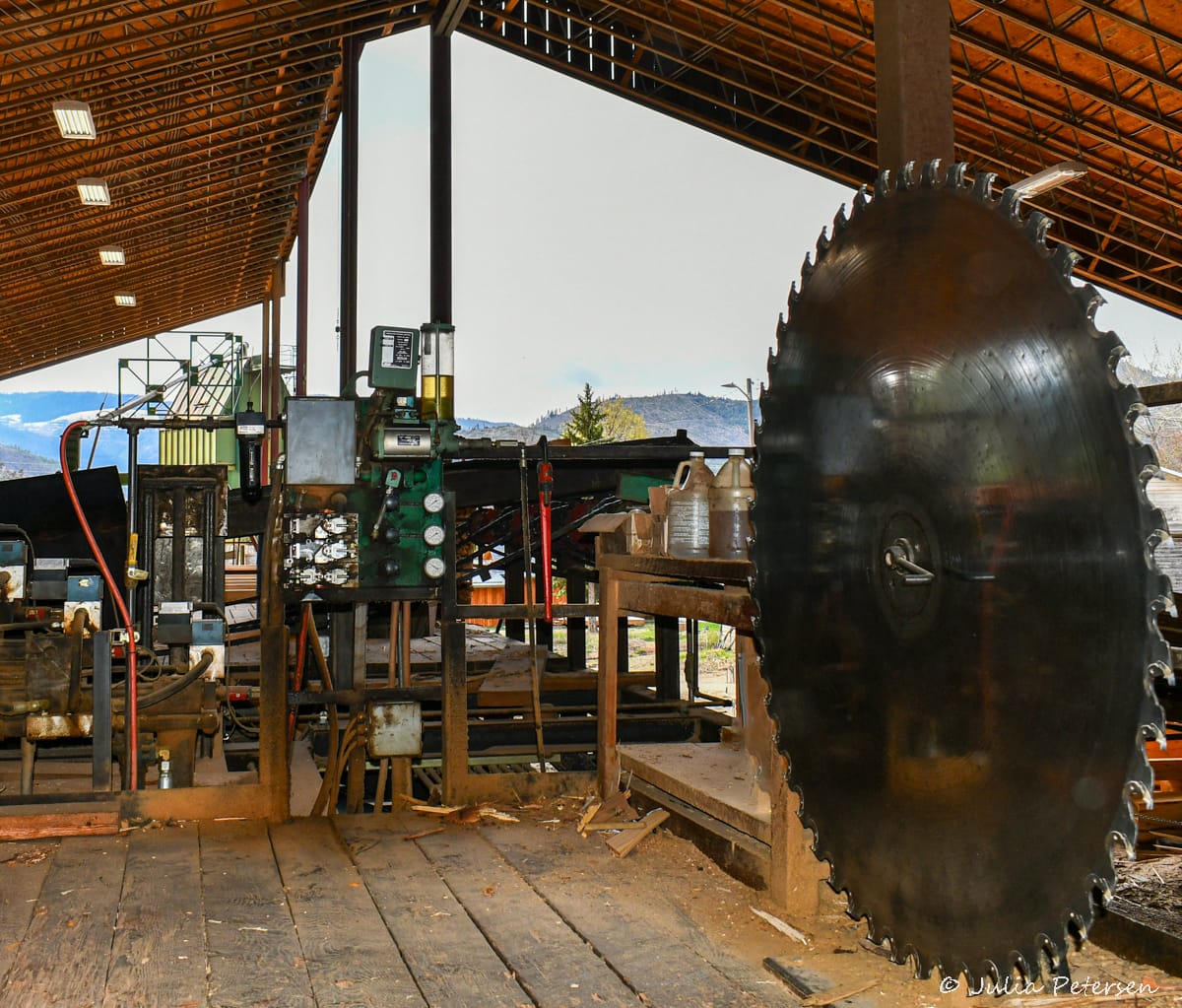Christmas Morning on the Farm
A remembrance When I was a youngster growing up in northern Idaho, my Albertson grandparents managed the Bonner County Farm.

Brad Corkhill, Whiteman Lumber, Cataldo, Idaho
The luckiest day in Brad Corkill’s life was January 5, 2009. That's the day his sawmill burned down. He bought it in 1988 from Wes Whiteman, one of my late father’s Masonic friends.
The mill sits in the bottom of a heavily timbered gulch off Old Highway 10 – a winding two-lane road that also passes by the Mission of the Sacred Heart, the oldest standing building in Idaho. You can see it from the mills' log yard. Thousands of tourists visit the Mission annually.

It was built between 1850 and 1853 by Flathead and Nez Perce Indians working under the direction of Antonio Ravalli, an Italian-born Jesuit missionary, artist and mechanical wizard who once fashioned a saw blade by flattening out the iron rim of a wagon wheel, then cutting teeth in it with a chisel before using a hand file to sharpen the teeth.
The Mission became a supply stop for trappers, pioneers and miners traveling east and west on the Mullan Road after 1863. The road’s namesake was Captain John Mullan, an 1852 West Point graduate and well-traveled explorer who surveyed and built the 624-mile route between Fort Benton, Montana and Fort Walla Walla, Washington between 1859 and 1862. Start to finish, it cost $230,000.
Mullan and his survey crew summited Fourth of July Pass, on Interstate 90 between Cataldo and Coeur d'Alene, on July 4, 1861. Mullan carved the date and the letters "MR" [Military Road] in a towering western white pine that was still standing when I was a boy in the 1940s. It has since fallen.
In the summer of 1911, the first automobile made the winding 49-mile trip between Wallace and Coeur d’Alene in five hours. The 25-foot-wide roadway, then known as the Yellowstone Trail, because it passed by Yellowstone National Park, was the first transcontinental highway connecting towns and cities in the northernmost states. Its' 3,021-mile route takes travelers from Boston's Logan International Airport to bustling downtown Seattle.
From Wallace to Coeur d'Alene today: About an hour.
The Yellowstone Trail was renamed Highway 10 in 1926. The Eisenhower Administration, which began construction of the nation's $26 billion 41,000-mile Interstate Highway System in 1957, changed its designation to Interstate 90.
It is no exaggeration to say that 90 traverses a great deal of the history of western Montana and northern Idaho. The Whiteman mill has been part of the region's rich history for 96 years.
Our family – Mother, Dad and me - drove past the Cataldo Mission and the mill hundreds of times during my growing up years in Kellogg. One of Wes Whiteman's sons was in my 1962 high school graduation class.
Wes’ father, Harold, built the mill in 1928 and, so far as I know, mine timbers were the Whiteman family’s bread and butter for decades. They sold millions of them to Silver Valley mines before Corkill bought it from surviving family members.
The Whiteman name is still on the door, several of Corkill’s 10 employees are Whiteman heirs, and Corkill still sells an assortment of products including timbers to Silver Valley mines, but he's now in the custom-cutting business and he sells a wide array of products to customers all over the nation.
“It took me years to shed my stud mill production mentality,” he told me during our recent mill tour. “But it wasn’t until I started thinking about how to rebuild the mill in 1997 that I figured out that we’d be a lot more profitable if we just slowed down. Even in good times, stud market profit margins are slim. We were never going to be big enough to be competitive.”

Corkill operates one of the last two or three circle saws in the western United States. Samuel Miller was awarded British Patent No. 1152 for the first circle saw in 1777. His were the first mechanized sawmills in the United States. Before their invention, pit saws - first used by the Romans - were common.
One man stood atop the log and the other stood in the bottom of the pit beneath the log. To a one-two cadence, the man above pulled up on a long "whip saw" and the man in the pit pulled down. Early day loggers called these man killers "misery whips." Chainsaws ended the misery in the 1930s.
Corkill’s circle saw runs at 640 revolutions per minute - more than 10 turns per second. It looks different from Sam Miller's saw but logs still travel on a carriage through a whirling blade the same way they did nearly 250 years ago.
Miller's circle saws were powered by horizontal axles connected to waterwheels placed in rivers or streams. Corkill's 60-inch circle is powered by a 480-volt three-phase motor connected to an AVISTA transmission line.
Corkill’s sawyer cuts by eye the same way my great grandfather did when Russell and Pugh hired him to be their head sawyer at their nearby Harrison mill in 1902. I have the gold pocket watch the company gave him when he retired in 1928.
I asked Corkill why he didn't opt for a high-strain band mill when he rebuilt his mill in 2009. There are thousands of them in dimension sawmills all over the U.S. They're very efficient and cut much faster than circle saws.

“Cost was a major consideration,” he explained. “I didn’t want to install an automatic saw sharper to handle blade loops that are more than 20 feet long. Here we simply resharpen the detachable teeth a couple of times a day, then change them when needed."
"We’re cutting about 14,000 board feet daily," he told me. "A bigger outfit with a band mill or twin mill can cut many times what we cut in a day, but I sleep much better at night knowing that everything we cut is presold to a customer who wants something special that we can provide.”
Corkill buys his logs - mainly Douglas-fir and western larch - from several private landowners in northern Idaho and a few in western Montana.
“Our main product is kiln dried Douglas-fir that we resaw to customer specifications in the same circle saw after it’s squared and dried,” Corkill reports. “Very few mills today can cut a 36-foot log. We can. And diameter is not a limiting factor. We split our largest logs lengthwise, then run them through the saw, kiln dry and resaw. Our customers then manufacture their finished products from what we saw for them.”
As an after-thought, he adds, “People love wood for its' strength and beauty. It’s become a status symbol in the homes of high-end customers. Architects specify wood because they can do so many things with it - and it's renewable, unlike steel or concrete. It all makes things pretty simple for us.”
Corkill recently sold the Whiteman mill to his son, Nathan, a retired Marine fighter pilot who, like his father, helps out whenever and wherever help is needed. The day my wife, Julia, and I were there he was loading a 53-foot flatbed trailer destined for Hutchinson, Kansas. Julia is a marvelous photographer. She took the photos that accompany this essay.
“I still buy our logs, but it’s Nathan’s mill now,” Corkill said. “At the moment we have more logs in our log yard than we need, but it’s a nice predicament to have. When times were tough many years ago, there was a day when we were down to one truckload of logs. That’s definitely not a nice place to be.”
Corkill is very positive about the future of the reconfigured Whiteman mill.
"Nathan brings a fighter pilot’s energy and and a Marine's work ethic to this place,” Corkill said of his son. “He’s a much faster learner than I was. I’m very proud of him.”
There is a folded American flag in a triangular wooden case mounted above the door of the crew lunchroom, behind the circle saw. The brass plate on the case reads, “Dedicated to the Whiteman Crew.”
The flag was flown over Fallujah, Iraq during an F-18 combat mission in the summer of 2009. The pilot was Lt. Col. Nathan Corkill.

You 100% tax-deductible subscription allows us to continue providing science-based forestry information with the goal of ensuring healthy forests forever.